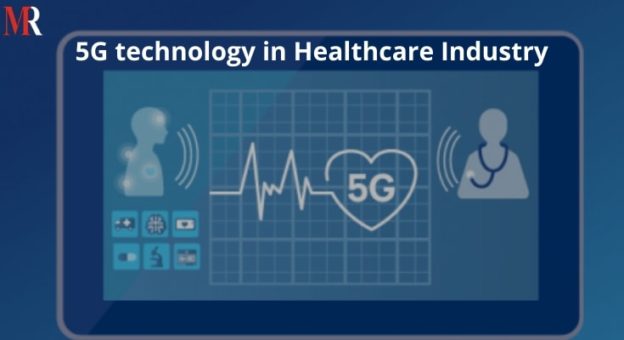5G technology can play a huge role in fighting the future waves of the pandemic by providing patients remote access to healthcare professionals, easier monitoring of patients in home quarantine and use of connected devices.
5G technology is set to bring about seismic changes in the world of wireless technology, and India is not far behind. Telecom operators in India have been permitted to conduct non-commercial 5G trials to study the reach of the technology.
One industry that is sure to benefit from this in multiple ways is healthcare. The Covid-19 crisis has thrown the spotlight on the immediate need for better healthcare infrastructure and the importance of telemedicine. 5G technology can play a huge role in fighting the future waves of the pandemic by providing patients remote access to healthcare professionals, easier monitoring of patients in home quarantine and use of connected devices.
In a bid to test the waters, some healthcare players around the world, especially in the USA and UK, are already working with local telecom companies to enhance patient experience, conduct teleconsultations, and engage virtual reality and augmented reality (VR/AR) to reduce pain for chronic patients.
Some prominent experiments from across the world where 5G is being deployed in healthcare are listed below:
- British Telecom is working closely with Britain’s NHS to test the future of connected ambulances.
- Rush University & AT&T in the United States are looking to improve clinical care and patient experience with 5G.
- Emory Healthcare in the United States is leveraging Verizon‘s 5G wideband for multiple scenarios such as training, monitoring, diagnostics and image transfers from ambulance to ER.
Coming back to the Indian context, using 5G can revolutionise the Indian healthcare segment in multiple ways. Some of the potential use cases include:
Making world-class healthcare accessible to rural India
It is seen that 80% of patients in rural India visit public hospitals for primary health-related problems, which could have been addressed in PHCs near their home. A robust Smart Health solution characterised by a cloud-based platform, connected devices and trained professionals can significantly reduce physical visits to hospitals as these can be managed from PHCs with doctors being available at a centralised remote location. A reliable and fast 5G network can make this possible. This will also ease the burden on secondary and tertiary hospitals, which can focus on specialised and critical care.
Patient wellbeing can be monitored and addressed remotely
By employing IoMT devices, healthcare workers can monitor patients remotely and ensure that patients from remote locations need not travel to nearby urban cities for care. With wearables such as ECG/EKG monitors, smart hearing aids, bio patches, etc., patients can keep a close watch on their vitals and send regular updates to their doctors.
Faster management of information and transmission for quick treatment
One of the most discerning factors of 5G is the speed at which it can transmit huge quantum of information. This is especially useful for the healthcare community because patient case files and especially MRI reports and scans, which are large files, can be quickly sent to a specialist for review.
Better patient care and faster recovery with enhanced AR, VR, and Spatial Computing
By powering artificial intelligence (AR), virtual reality (VR), and spatial computing, doctors in the future will be able to conduct innovative and less invasive operations, thereby improving patient recovery time. 5G can further simulate complex medical scenarios and help doctors work with critically ill patients. The ultimate aim is to reduce pain and recovery time for patients while using 5G-enabled AR and VR technology.
Launching Smart Ambulances for better emergency care
Future ambulance technology will help with critical transmission of information from first respondents to healthcare professionals, thereby saving precious time. 5G can allow quick transfer of data and enable emergency doctors to have some basic understanding of the case, even before the patient arrives in ER
.
5G is still an emerging technology and also has its fair share of challenges. The flexibility and numerous use case possibilities can make it prone to cyber-attacks. The complete rollout of 5G can be a costly affair, and infrastructure needs to be in sync with it. As the 5G technology ages, these questions will be addressed and resolved.
Successful rollout, quicker adoption and widespread use of 5G in India will need concerted efforts from both government and private sector players. Multi-disciplinary quick response teams should be formed to work in unison to experiment and develop practical scenarios where the technology can be deployed and set up.
Incentives to be granted for public and private sector players to use 5G, which would encourage more institutions to come forward. Integration of 5G with healthcare will also give rise to a new breed of professionals qualified in both healthcare and the use of technology. It would be beneficial to invest in the creation of courses, setting up of specialised training institutes and training of professionals to create a sustained pool of job-ready talent that can be recruited.
In conclusion, 5G is set to bring on outstanding growth in multiple sectors, especially healthcare. The long-term changes in the healthcare industry will aid better patient care, ease the burden on healthcare professionals, and have a much broader reach to ensure quality healthcare for everybody.
https://telecom.economictimes.indiatimes.com/news/impact-of-5g-on-healthcare-medicine-reimagined/83397396





